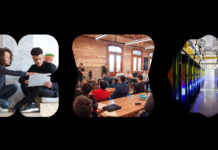IBL News | New York
Coursera (NYSE: COUR) reported yesterday the first quarter of 2022 financial results showing that net loss increased significantly to $38.3 million — or 31% of revenue —, compared to $18.7 million — or 21% of revenue — a year ago.
In the same period, total revenue was $120.4 million, up 36% from $88.4 million a year ago.
For the full year of 2022, the protection points out revenue in the range of $538 to $546 million, with an adjusted EBITDA in the range of $(45.5) to $(51.5) million.
Other financial highlights for the first quarter, which ended March 31, 2022, were:
- Gross profit was $77.6 million or 64.5% of revenue, up 57% from $49.5 million a year ago. Non-GAAP gross profit was $78.2 million or 64.9% of revenue, up 58% from $49.6 million a year ago.
- Non-GAAP net loss was $(15.8) million or (13.1)% of revenue, compared to $(13.4) million or (15.1)% of revenue a year ago.
- Adjusted EBITDA was $(11.0) million or (9.1)% of revenue, compared to $(10.1) million or (11.5)% of revenue a year ago.
- Net cash used in operating activities was $(38.3) million, compared to $(4.3) million a year ago. Free cash flow was $(42.2) million, compared to $(8.6) million a year ago.
Coursera’s CEO, Jeff Maggioncalda, highlighted the fact that the number of users surpassed 100 people. “They come to Coursera for high-quality, affordable education that can unlock advancements in their life and career.”
The Mountain View, California – based company added 5 million new registered learners during the quarter for a total of 102 million.
Coursera’s CFO, Ken Hahn, viewed results as “a strong start to 2022”. “We believe our broad catalog of job-relevant content and credentials from recognized, world-class brands is helping to meet the needs of learners and institutions in an increasingly digital world,” he added.
Regarding the improvements on the learning platform, Coursera partnered with the University of Michigan to use extended reality (XR) to enable social learning through role-play simulations to provide training in mobility, manufacturing, and healthcare.
It also added a content ingestion solution with Canvas.

 En Español
En Español





















